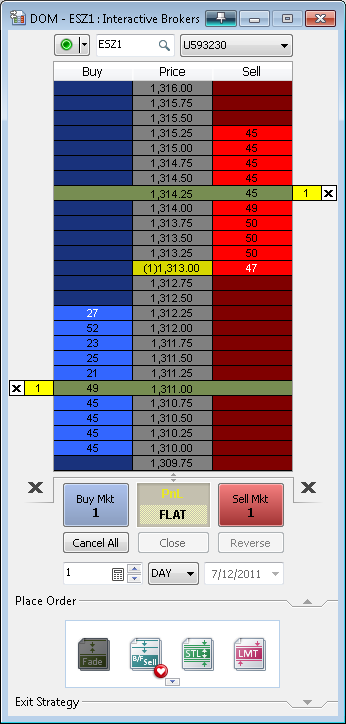A Market Entry Exit Strategy
Post on: 16 Март, 2015 No Comment

A Market Entry Exit Strategy | Statistically informed look at CNX Nifty valuation levels 1 comment
Sep 29, 2009 1:10 PM
29 Sep 2009
Market Entry Exit Signals? The CNX Nifty is today trading at a PE of 22.55.
Many senior investors I speak to, have started getting cautious. They are cutting their exposures and not making fresh entries. While there may still be some stock-specific value left, valuations are rich in many frontliners.
With the FIIs continuing to pour in money, there is also talk of whether the market can touch new highs! With increasing inflows, the FIIs also reckon if the Indian currency were to appreciate to Rs. 40 to a dollar from current levels, even if that were to take 1-2 years, that’s a straight 20% gain on the currency! As the Raring Bull is fond of saying, who’s to argue with what valuation is right for the Indian market?
Having learnt my lessions in 2007 & 2008 (I remained invested throughout and did not book even partial profits), I am now in search of some kind of a market entry exit decision-making model for myself. A senior prompted me to look at long-term historical Nifty Valuation data. He suggested a statistically informed look at valuations can introduce some predictability to investment returns!
Between January 1999 and September 2009, the Nifty traded at low PEs of below 11 and high PEs of 28+. It hit those extreme valuations rarely. The average PE was 17.72 while the median was 17.58 and the modal value was 14.31. The standard deviation was 3.64
The Median indicates that exactly half the time, the Nifty traded below 17.58. And the Mode shows it most commonly traded between 14-15. Most of us are probably aware of this on an intuitive basis, even if we may not have it on our fingertips.
Let’s first check whether the 10yr CNX Nifty data above holds a normal distribution pattern. The laws of normal distribution suggest valuations between 14-21 (within one standard deviation of the average) around 68 per cent of the time and valuations between 10-25 (within two SDs) around 95 per cent of the time. The actual stats are 67 percent and 95.6 percent respectively, so the reality is very close to what is expected of normally distributed Nifty PE data.
Now this is a good Bell Curve. If we look at the Nifty PE distribution data/graph above, we can see that the market is at an unusual valuation, when outside Mean+/- 1SD. And it is at an extraordinary valuation, when outside Mean+/- 2SDs.
We are always told by seniors to look for PEs lower than the long-term average, as a buying signal. Similarly higher than long-term average PEs, would signify a sell signal, right? My market entry exit model, is now refined by the laws of normal distribution! It looks something like the following:
a. At the higher end of the 14-21 scale, start cutting exposure; book partial profits
b. When it starts creeping up over 23, start selling

c. If I am still around & milking, and it goes beyond 25, exit most; make portfolio zero cost
d. At 13 or below, start buying & heavily
In October 1999, the Nifty was at PE 23 a strong sell signal. In May 2004, it was at PE 14 a good buy signal. Mar 2009, the NIfty PE went to being just over 12, but that wasn’t as strong a signal as October 2008, when PE went below 11. It is currently (Sep 2009) at PE 22.55 — a time to get cautious again, signal!
I am convinced by the senior’s suggestion of using the long-term historical Nifty PEs as a guide for my market entry exit strategy. Executing that is another matter though, and will take loads of discipline. Do I have it in me? I am asking myself this, daily:). It might interest you to know that the Franklin Dynamic PE fund follows a similar market entry exit strategy.
If I am able to shut out conflicting emotions and decide to act rigidly on the sell-heavily signals, it probably would also mean forgoing extraordinary returns at peaks. The CNX Nifty peaked in February 2000 at 1800 levels and at PEs of 27+. It peaked again in January 2008 at 6200 level, and at PEs of 28+!
However the discipline to forgo the cream, might also mean tremendous capital safety for me. I would not again be caught in a situation of hopelessly remaining fully-invested; worse still — be unable to bet heavily on the very stong buy signals in Oct 2008 and Mar 2009, because all my funds were tied-up in buy-and-hold!
Happy Investing!
Instablogs are blogs which are instantly set up and networked within the Seeking Alpha community. Instablog posts are not selected, edited or screened by Seeking Alpha editors, in contrast to contributors’ articles.














